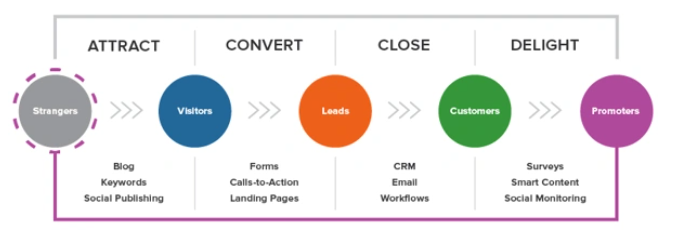How to Write a Service Review

Feedback has long been the backbone of the business world. Regardless of the sector or size of a business, customer reviews have the potent capability to dictate future operations, affect brand image, and drive sales.
In the age of digital communication and online marketing, the role of service reviews has only amplified. Thus, knowing how to craft a stellar review is paramount. This extensive guide will not only delve deep into the importance of service reviews but also provide a step-by-step approach to writing an impactful one.
Understanding the Purpose of a Review
At first glance, a review is a simple expression of personal opinion. But when we dig deeper, we understand its multifaceted role.
Feedback for Improvement
a. The Growth Catalyst: Service providers, from small start-ups to multinational corporations, always look for ways to improve. Reviews serve as raw, unfiltered data that businesses can use to identify gaps in their services and products. Each review is a potential goldmine of information, detailing specific areas of concern or highlighting aspects customers love.
b. The Evolution of Business Practices: Over time, a collection of reviews can steer a business towards better practices. By paying attention to recurring themes or concerns in reviews, companies can refine their offerings, often making them more aligned with customer needs.
Guiding Potential Customers

a. Trust Building: Many positive reviews on such a platform can quickly establish trust and influence purchasing decisions. It's not just about the number of reviews but also the genuineness and depth of user experiences shared. A trusted online review platform provides potential customers with valuable insights, allowing them to make informed choices and fostering confidence in their decisions. In contrast, negative reviews, if appropriately addressed, can showcase a company's commitment to customer satisfaction.
b. Decision Making Simplified: Reviews are decision-making tools. A potential customer can gauge the efficacy, reliability, and quality of a service based on the experiences of others. It reduces the risk of trying out a new service and offers a clearer picture of what one can expect.
Crafting a Comprehensive Service Review
Writing a review is an art that requires a mix of objectivity, clarity, and detail. Here's a breakdown of how to achieve that balance:
Begin with a Clear Title
a. First impression matters: The title of your review is the first thing readers will see. A catchy, concise title can set the tone and pique interest. Ensure it encapsulates the essence of your experience.
b. Keywords are key: Incorporate relevant keywords related to the service in your title. It helps improve the visibility of your review, making it easily accessible to others searching for similar services.
Provide Context
a. Setting the Stage: Before delving into the core of your experience, set the background. It could include why you sought out the service, any specific needs or expectations, and the circumstances under which you used it.
b. The Importance of Timing: Mentioning when you availed of the service can be crucial. Services evolve, and what was relevant a year ago might not be the case today. It helps potential customers understand the timeline of your experience.
Detail the Experience

a. Painting a picture: Here's where you dive deep. Describe every interaction, every pro and con, and every emotion you felt during your association with the service. The more detailed you are, the more precise the picture you paint for prospective users.
b. Use real-life examples: Instead of making vague statements, substantiate your claims with examples. For instance, instead of saying "great customer service," you could detail how a customer service representative went to assist you.
Be Objective and Fair
a. Balanced Perspectives: While it's natural to focus on the negatives if you had a bad experience, it's crucial to mention any positive aspects, too. Conversely, if your experience was largely positive, talk about any minor hiccups or areas for improvement.
b. Avoid Personal Biases: Personal prejudices can cloud judgment. It's essential to differentiate between a genuine service flaw and something you didn't like due to personal preferences.
Offer Constructive Feedback
a. Growth through Feedback: While pointing out flaws, take a moment to suggest how they can be rectified. It not only adds credibility to your review but also helps businesses identify actionable feedback.
b. The tone matters: feedback should be offered constructively. Avoid using aggressive or accusatory language. The goal is to help, not harm.
Conclude with a Summary
a. Wrap It Up: Your conclusion should encapsulate your overall experience. It's the section where you give your final verdict and offer recommendations.
b. The Power of Recommendation: Stating whether you'd use the service again or recommend it to others can influence potential customers. It's a testament to your overall experience and satisfaction level.
The Do's and Don'ts of Service Reviews

Navigating the intricacies of review writing requires awareness. Here are some guidelines:
Do's
a. Consistency in Rating: If your platform uses star ratings, ensure that your written review aligns with the stars you've given.
b. Be Comprehensive: Don't shy away from writing a long review if it means covering all aspects of your experience. Depth is often more valuable than brevity.
c. Engage with Responses: If the business or other users respond to your review, engage constructively. It can lead to meaningful dialogue and even resolutions.
Don'ts
a. Avoid absolutes: Phrases like "always" or "never" can be misleading. Base your review on your experience, not generalizations.
b. Shun personal attacks. Focus on the service, not individuals. Personal attacks or defamatory remarks can discredit your review.
c. Refrain from external influences: Your review should be based on your experience, not hearsay or other reviews.
Leveraging Reviews as a Business
Embracing reviews can be a game-changer for businesses. Here's how:
a. Engagement is key. Responding to reviews, both positive and negative, shows customers that you value their feedback. It can also mitigate potential damage from negative reviews if responses are timely, respectful, and solution-oriented.
b. Encourage Reviews: Actively encourage satisfied customers to leave reviews. It not only builds your online reputation but also boosts trust among potential customers.
c. Utilize Feedback: Don't just collect reviews; act on them. Use them as a roadmap for future improvements.
Conclusion
In the interconnected digital world, service reviews act as both mirrors reflecting the current state of a business and windows offering glimpses into potential future experiences. Crafting a thorough, balanced, and detailed review not only assists other customers but also plays a pivotal role in the continuous improvement cycle of businesses. Engage in this process with care, responsibility, and thoroughness.





